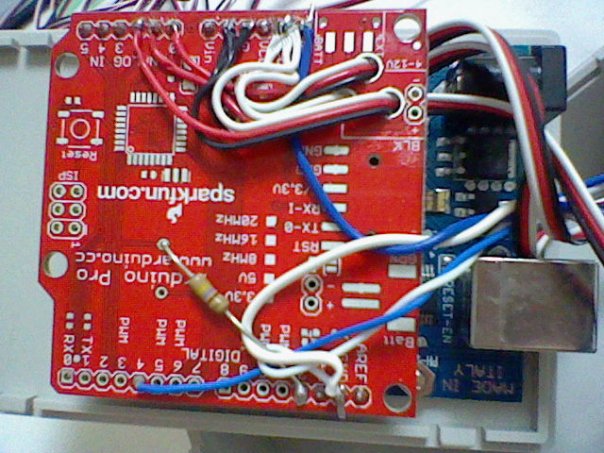 Quick Navigation
Quick Navigation All projects
All projects  Hardware
Hardware Links
Links Top projects
Top projectsAlan numitron clock
Clapclap 2313/1386
SNES Pi Webserver
USB Volume/USB toys
Smokey amp
Laser cutter
WordClock
ardReveil v3
SNES Arcade cabinet
Game boy projects
cameleon
Home Presence Detector
 GitHub
GitHubAlanFromJapan
 Contact me
Contact me
 Who's Alan?
Who's Alan?Akizukidenshi
Elec-lab
Rand Nerd Tut
EEVblog
SpritesMods
AvrFreaks
Gameboy Dev
FLOZz' blog
Switch-science
Sparkfun
Suzusho
Datasheet Lib
Reddit Elec
Ermicro
Carnet du maker (fr)
ardserverroomprobe
Last update: Thu Jun 5 22:25:40 2025
Purpose
ardServerRoomProbe or ASRP has for purpose:- Provide the INFRA team engineers with informations related to the server room status (not the servers themselves, they already have this)
- Provide the following info:
- Current and historical temperature (use 2~3%20 temp probes) - 3 probes %20 average
- Current and historical humidity - drop, too annoying
- Information should be made available :
Pictures
 |
 |
 |
Material
- Arduino card : no special things needed, so even a Tiny would fit. However since permanent USB connection is required and size doesn't matter, let's roll with the Arduino 2009.
- LM35 temperature probes x3 (150 JPY x3) http://akizukidenshi.com/catalog/g/gI-00116/
- Humidity probe x1 (500 JPY) http://akizukidenshi.com/catalog/g/gI-00117/
- Leds : power x1, now probing x1
- Box, resistors, USB cable,...
- On-box display ? http://akizukidenshi.com/catalog/g/gP-02919/
Code
SNMP Agent
See here SNMP agent in C#. I won't disclose the real version of the software, but I can show the tests we made before moving to the real job.Arduino probing code
It has 3 sensors (pin analog 0 to 2) plus a blink led on digital 12.It polls all the sensors every 3 seconds, store the SENSOR_AVERAGE latest results in an array and return the average per sensor. Up to the tests I've done now, it's quite nice results...
Source SVN
#define PIN_LED 12 #define SENSOR_COUNT 3 #define SENSOR_AVERAGE 6 long mSavedValues[SENSOR_COUNT][SENSOR_AVERAGE]; int mRound = 0; void setup() // run once, when the sketch starts { pinMode(PIN_LED, OUTPUT); Serial.begin(9600); // begin serial //init table of values for (int i =0; i < SENSOR_COUNT; i%20%20){ for (int j = 0; j < SENSOR_AVERAGE; j%20%20){ mSavedValues[i][j] = 0; } } } long vVal = 0; long vValScaled = 0; char vMessage[50]; char vBuffer[20]; void loop() // run over and over again { //start reading digitalWrite(PIN_LED, HIGH); //read values and store for (int i =0; i < SENSOR_COUNT; i%20%20){ vVal = analogRead(i); vValScaled = ((long)5*vVal*(long)100/(long)1024); //convert voltage to temperature mSavedValues[i][mRound] = vValScaled; } mRound = (mRound %20 1) % SENSOR_AVERAGE; //calculate average for (int i =0; i < SENSOR_COUNT; i%20%20){ //reset message buffer vMessage[0] = 0; vVal = 0; for (int j = 0; j < SENSOR_AVERAGE; j%20%20){ vVal %20= mSavedValues[i][j]; } vVal = vVal / SENSOR_AVERAGE; itoa(i, vBuffer, 10); strcat(vMessage,vBuffer); strcat(vMessage,"="); itoa(vVal, vBuffer, 10); strcat(vMessage,vBuffer); strcat(vMessage,","); Serial.print(vMessage); } Serial.println(""); //end of read digitalWrite(PIN_LED, LOW); delay(3000); }
electrogeek.tokyo ~ Formerly known as Kalshagar.wikispaces.com and electrogeek.cc (AlanFromJapan [2009 - 2025])